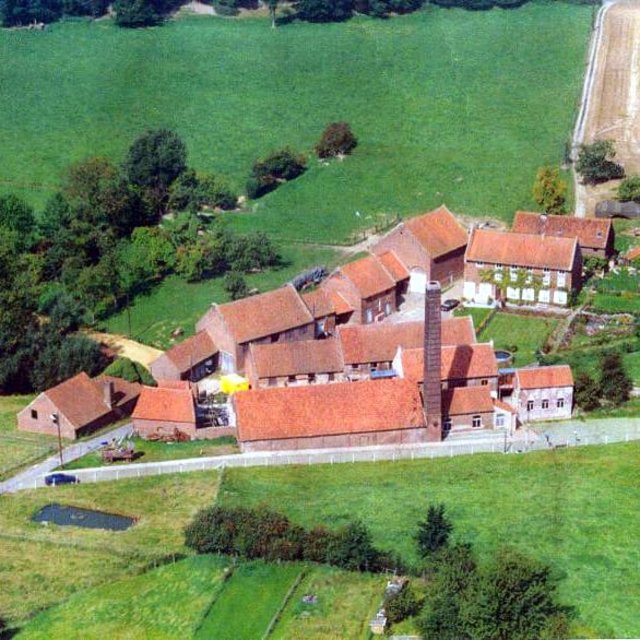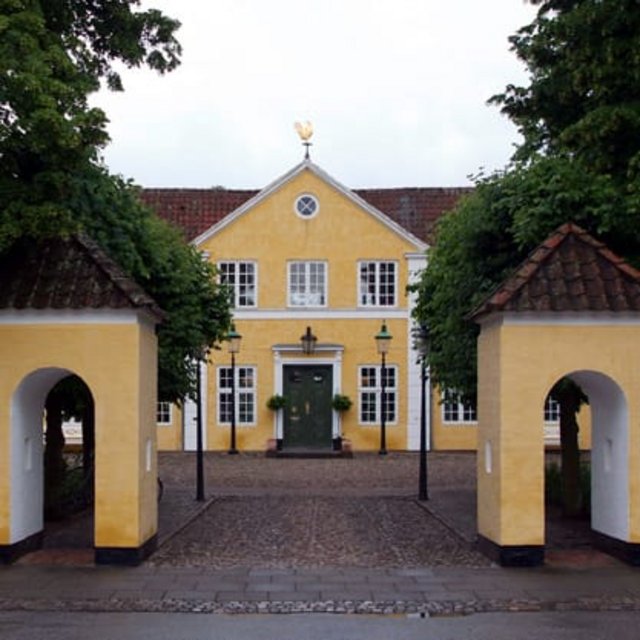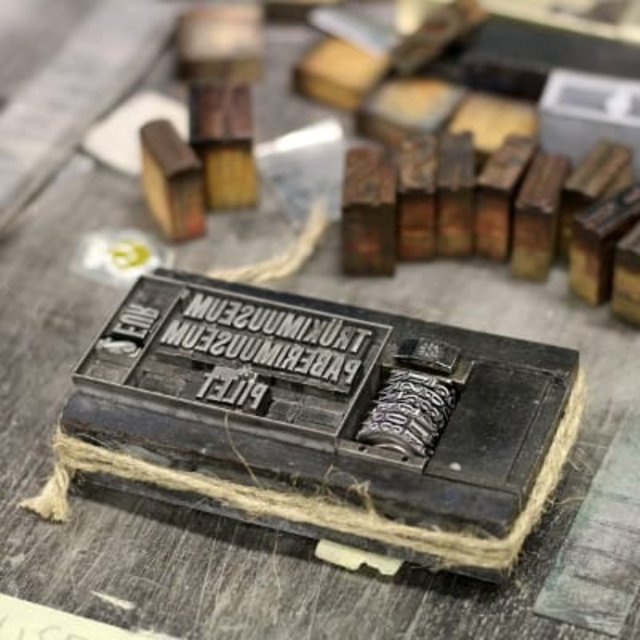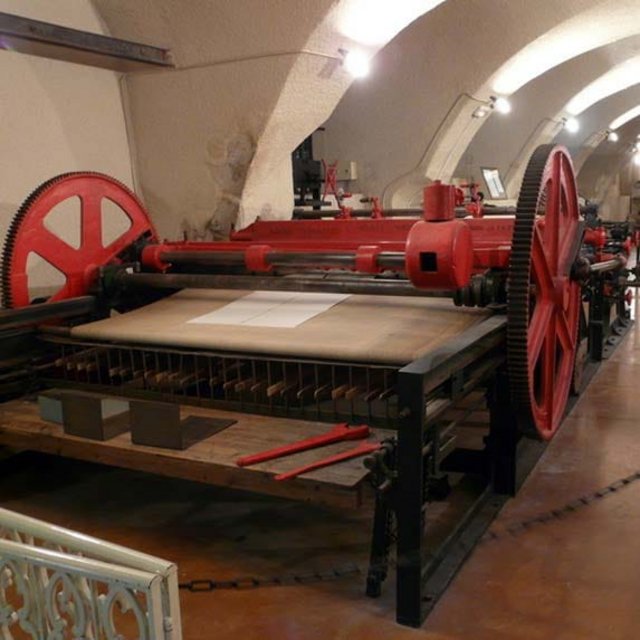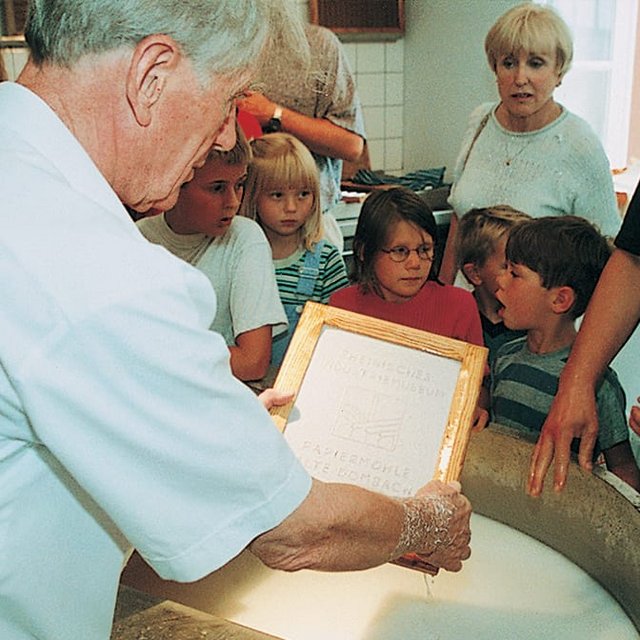European Themeroute | Paper
It all began in China. Comparatively early, the Chinese empire started to build up a large bureaucracy. This was probably why in the 2nd century BC the process of papermaking was invented - a process which basically remained in use up to the present day. Although raw materials have changed and production ... more
 European Theme Route Paper
European Theme Route Paper
It all began in China. Comparatively early, the Chinese empire started to build up a large bureaucracy. This was probably why in the 2nd century BC the process of papermaking was invented - a process which basically remained in use up to the present day. Although raw materials have changed and production has been automatated, the three core steps are still the same. Basically, paper is made of a solution of fibres set up in a vat. The Chinese presumably used a mixture of tree bark, hemp and rags, which were beaten into a fibrous pulp and diluted with water. Then, in the first step, a craftsman dipped a screen the size of a sheet of paper into the vat and with it pulled out a portion of pulp. He handed the screen over to a colleague who in an elegant rolling motion dumped the dripping mat of fibres flat onto a mat. After a fair number of sheets had been assembled, a third craftsman gently pressed the remaining water out of the stack. The still damp sheets finally were dried, in older times usually by hanging them up on a clothes line.
The Chinese kept the art of papermaking secret for a long time, but around 750 AD an Arab army captured Chinese soldiers in Samarkand who finally revealed the technique. With minor changes, the Arabs quickly adapted it. They used hemp and flax as raw materials, since they had abundant access to them. Furthermore, they treated the surface of the paper with a glue made of starch, which made writing on it easier. The material spread rapidly through the expanding Arabian empires, providing a basis for scholarship and the arts of poetry and calligraphy, which flourished in the muslim world.
Since the Arabs manufactured paper in their european possessions, too, Europe learnt papermaking through them. It seems that european paper production started in Palermo and Valencia in the 12th century. After the muslim emirates north of the Mediterranean Sea fell into christian hands again, european scholars, magistrates and merchants quickly discovered the advantages of the new writing material over the parchment they had been used to. Papermaking was taken up quickly, based on a pulp made from rags of cotton and linen now, and with various technical advancements. In Fabbiano in Italy around 1250, a papermill started manufacturing pulp on a stamping unit equipped with metal-clad hammers and powered by a waterwheel. For surface sizing italian craftsmen used gelatine made of horns, hooves and animal skins, which efficiently prevented the ink from running. Moreover, since the technique of drawing long, even copper wire had been invented, the screens used to lift pulp out of the vat were manufactured of copper wire now. At the same time the watermark was introduced: when a length of wire, bent into a desired form, was sewn onto the surface of the screen, it left a mark on every sheet of paper.
Diffusion of the new material across the continent progressed slowly. During the 14th century paper found its way into the chancelleries, courts and cloisters of Europe. Apparently, the first european papermill was set up in the french town Troyes by 1338. Nürnberg in southern Germany followed by 1390, Marly in Switzerland by 1411 and Hertfordshire by 1494 – a region which was to boom with papermills during the industrialisation. As the ideas of Renaissance thinking spread, the use of paper increased, because in banks and on markets, in schools and courts of law writing became more important now.
The picture drastically changed when Johannes Gutenberg invented the movable type printing press in 1455. Now that books and pamphlets could be distributed in numbers unheard of before, a virtually insatiable demand for paper arose. In this process, Italy lost its leading position in papermaking to the North of France, but in the 17th century, when protestant papermakers were expelled from there, Holland took over. There, around 1680, originated an important technical innovation, termed "Hollander beater", which replaced the stamping mills: basically it is a trough with a rotating beater wheel, which is fitted with a number of blades to chop the cotton or linen rags into a fibrous pulp. The new device was so efficient that all the small papermills who could not afford quickly it went out of business.
The crucial invention though took place at the beginning of the industrialisation: the first machine which did not produce single sheets, but a continuous web of fibres, was developed by the Frenchman Nicolas Louis Robert in 1798. He constructed a long flexible screen of wire mesh which, powered by a hand crank, rotated continuously, not unlike a conveyor belt. While it rotated, pulp was shovelled onto it automatically by a paddle. The only drawback of the device was that every 12-15 metres the still damp fibrous web had to be cut off by hand to prevent it from sticking together. With slight alterations, the machine went into commercial use in England thanks to financial backing by Henry Fourdrinier, a stationer of London, and is therefore, rather unfairly, known as "Fourdrinier machine". However, it took a couple of years more to bring it to perfection. By 1829 engineers from the sophisticated British mechanical industries had automated the entire process: they added a number of rolls to the system which were heated by steam. When the web of fibres passed through them, it dried so effectively that it could be rolled up immediately. New paper mills, powered by steam engines, now sprang up all over Europe.
With more than sufficient production capacity available, another problem began to be felt: a lack of raw materials. After endlessly experimenting with straw, tree bark and thistles, in 1843 the German inventor Friedrich Gottlob Keller reached a breakthrough. He managed to grind down pieces of wood to extremely fine fibres, termed "groundwood", which could be used to make paper with only a small amount of rags added. Paper containing wood however after a short time begins to yellow and it breaks quite easily. This is due to lignin, a natural ingredient in wood, which can be extracted from the raw material by cooking it. The American chemist Benjamin Chew Tilghman was the first to acquire various patents for cooking wood fibres in a sulphite dissolution in the 1860s. The sulphite process yields almost pure cellulose fibres, a raw material of high quality which makes for very fine white paper, even if it is comparatively expensive to produce.
This invention initiated paper production on a large industrial scale. Factories were moved to areas where wood was abundant, especially the forest regions of Sweden and Finland. But the chemistry of the process created new problems. Although cellulose already provided a high degree of whiteness in the paper, the producers additionally began to bleach it, using chloride, a chemical of extremely hazardous properties. Only since the end of the 20th century has its use in papermaking slowly decreased. Another serious issue has hardly been noticed by the public. Since the middle of the 19th century companies tried to reduce costs by eliminating an external step in the production process: the final surface sizing with starch. Instead they already put the starch in the vat with the pulp, but because the fibres did not absorb it sufficiently, they had to add aluminum sulphate - and this over time transforms itself into sulfuric acid, a highly aggressive compound which slowly destroys the paper from the inside out. Therefore, almost all the books, newspapers and documents printed between 1840 and 1980 are not aging resistant. They need an expensive de-acidification and restoration if they are to be preserved for future generations.
Related links

ERIH Anchor Points
Austrian Museum of Papermaking at Old Factory
Museumsplatz 1
4662
Laakirchen, Austria
German Technical Museum
Trebbiner Strasse 9
10963
Berlin, Germany
Member Sites ERIH Association
Kauttua Ironworks
Kauttuan Ruukinpuisto
Timmintie 20 b
27500
Eura, Finland
Kymenlaakso Museum
Kymenlaakso museo
Tornatorintie 99 B
48100
Kotka, Finland
Myllysaari Museum
Myllysaaren museo
Kanavanranta 3 C
37600
Valkeakoski, Finland
Sanctuary of Hercules Victor
Santuario di Ercole Vincitore
Via degli Stabilimenti 5
00019
Tivoli, Italy
Sites
Papermill Museum Herisem
Fabriekstraat 20
1652
Alsemberg, Belgium
National Papermuseum
Musée National du Papier
Malmundarium
Maison Cavens
Place de Chatelet 10
4960
Malmedy, Belgium
Velké Paper Mill
Ručni Papirna Velké
U Papimy 9
788 15
Velké Losiny, Czech Republic
Silkeborg Museum
Hovedgårdsvej 7
8600
Silkeborg, Denmark
Bruunshaab Old Cardboard Factory
Bruunshaab Gl. Papfabrik
Vinkelvej 95
8800
Viborg, Denmark
Estonian Print and Paper Museum
TYPA Eesti trüki- ja paberimuuseum MTÜ
Kastani 48f
50410
Tartu, Estonia
Vääräkosken Cardboard Factory
Vääräkosken Kartonkitehdas
Vääräkoskenkuja 28
63700
Ähtäri, Finland
Sunila Pulpmill and Residential Area
Alvar Aallon katu
Kotka, Finland
Serlachius Museum Gustaf
R. Erik Serlachiuksen katu 2
35800
Mänttä, Finland
Verla Mill Museum World Heritage Site
Verlan tehdasmuseo
Verlantie 295
47850
Verla, Finland
Moulin á Papier de la Rouzique
Route Varenne
24150
Couze-et-Saint-Front, France
Museum of the Canson and Montgolfier Paper Mills
Musée de Papeteries Canson et Mongolfier
Rue de Vidalon
07430
Davézieux, France
Écomusée du Carton
La Cartonneries de Mesnay
1 Rue Vermot
39600
Mesnay, France
Vaux Paper Mill
Papeteries de Vaux
24270
Payzac, France
Wallpaper Museum
Musée du Papier Peint
28 Rue Zuber
68170
Rixheim, France
Le Moulin du Got
Le Pénitent
87400 Saint-Léonard-de-Noblat
87400
Saint-Léonard-de-Noblat, France
Old Dombach Paper Mill LVR Industrial Museum
Kürtener Straße
51465
Bergisch Gladbach, Germany
Papermuseum
Papiermuseum
Wallstraße 2-8
52349
Düren, Germany
Homburg Paper Mill Museum
Gartenstrasse 11
97855
Homburg / Main, Germany
TECHNOSEUM. Museum of Technology and Labour
Museumstrasse 1
68165
Mannheim, Germany
Deutsches Museum
Museumsinsel 1
80538
München, Germany
Niederzwönitz Paper Mill
Köhlerweg 1
08297
Zwönitz, Germany
Museum of Paper
Museo della Carta
Via Acquasanta, 251
16010
Acquasanta, Italy
Paper Museum
Museo Della Carta
Via delle Cartiere
Amalfi, Italy
Museum of Paper and Watermarks
Museo Della Carta E Della Filigrani
Largo Fratelli Spacca 2
60044
Fabriano, Italy
Mele’s Paper Museum
Musea della Carta di Mele
Via Acquasanta 251
16158
Genova, Italy








